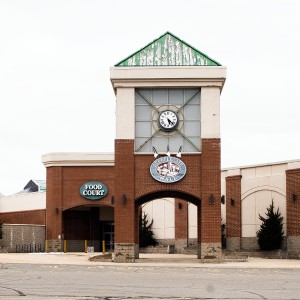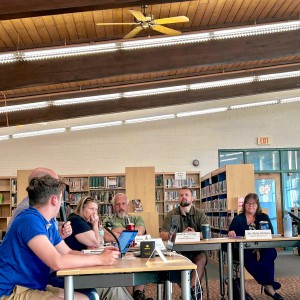Digging in search of the past at Bear Brook State Park
| Published: 07-17-2023 7:00 PM |
Metal shovels scraped through the rocky soil in Bear Brook State Park in Allenstown in a targeted quest to uncover evidence of Native American settlement in the area before European arrival.
Mark Doperalski, New Hampshire state archaeologist, has been searching for artifacts across the state for over 20 years and is instructing this year’s State Conservation and Rescue Archeology Program. The two-week dig overseen by the Archeology Bureau in the Division of Historical Resources of the New Hampshire Department of Cultural Resources was intended to give participants of all age ranges an educational experience in archeology to learn and research New Hampshire’s history that the land holds.
Finding survey sites that may be rich in history is similar to finding a spot that makes for a good camping site. Areas by water that are relatively flat are “hotspots” for potential discovery of past settlements. Doperalski said digs are typically held at state parks as they are open to the public, and the artifacts they find can be displayed in public places to enrich the understanding of local history.
“It gives a sense of place,” said Doperalski.
The designated survey site – the exact location of the dig isn’t publicized in order to preserve its integrity – was divided into a grid by marking off eight-meter sections to survey. If the team found something in one of the “test pits,” they would narrow the standard eight-meter distance to four meters.
Amid the breeze and bugs, the dig team began to uncover what Doperalski thought was some form of hearth near the Suncook River.
Doperalski based his opinion on the change in the soil, which was more orange in color, with distinct blackened marks that formed a portion of a circle. The team expanded the test pit a square meter to explore further.
To make certain the hearth was from Native Americans, Doperalski will send a sample in for a radiocarbon test date. This method costs about $800, but proves to be effective. Last summer volunteers and students found hundreds of lithic flakes from the chipping of stone in presumably crafting tools, as well as evidence of stone platform hearths and vessel shards, which were dated to 3,000 years ago through radiocarbon testing.
Article continues after...
Yesterday's Most Read Articles
“That’s archeology,” said Doperalski. “You piece things together as you go.”
Doperalski proudly showcased a lithic flake about 5 inches long resembling an arrowhead protected in a glass frame along with vessel shards in their outdoor office, which in the middle of the woods was a tent.
Doperalski said that the chemistry between participants has always been fun as the main groups that seem to enroll in the program are people who are at the start of their careers and want more experience in the field, or people who are retired and now have the time to “dig” into archeology.
The program offers 14 different classes in seven disciplines, with an entry-level and a more advanced level for each class. The program is not designed as professional training, but participants receive a certificate after completion that they may use toward archeological endeavors in the future, or for college credit at Plymouth State University.
The State Conservation and Rescue Archeology Program has offered two sessions this summer. The first session was held at Mollidgewock State Park from June 19-June 30. The second session at Bear Brook State Park was held July 3-14.







 Granite Geek: Can you grow radishes on the moon? NHTI students tried
Granite Geek: Can you grow radishes on the moon? NHTI students tried Adam Montgomery sentenced to minimum 56 years on murder charges in young daughter’s death
Adam Montgomery sentenced to minimum 56 years on murder charges in young daughter’s death Neighboring landowner objection stalls Steeplegate redevelopment approval
Neighboring landowner objection stalls Steeplegate redevelopment approval Following budget cut, Pembroke revisits future of elementary school re-build
Following budget cut, Pembroke revisits future of elementary school re-build
